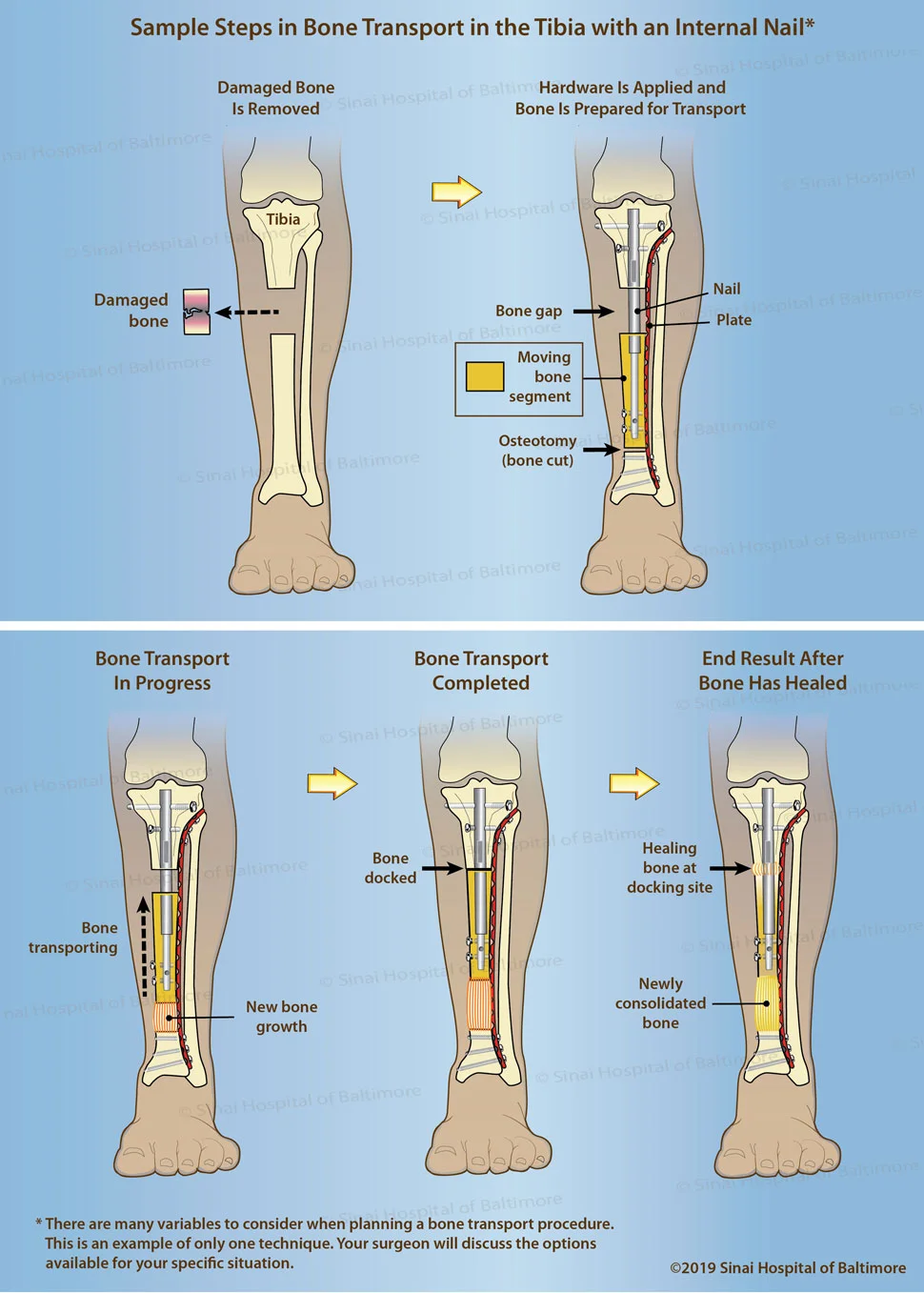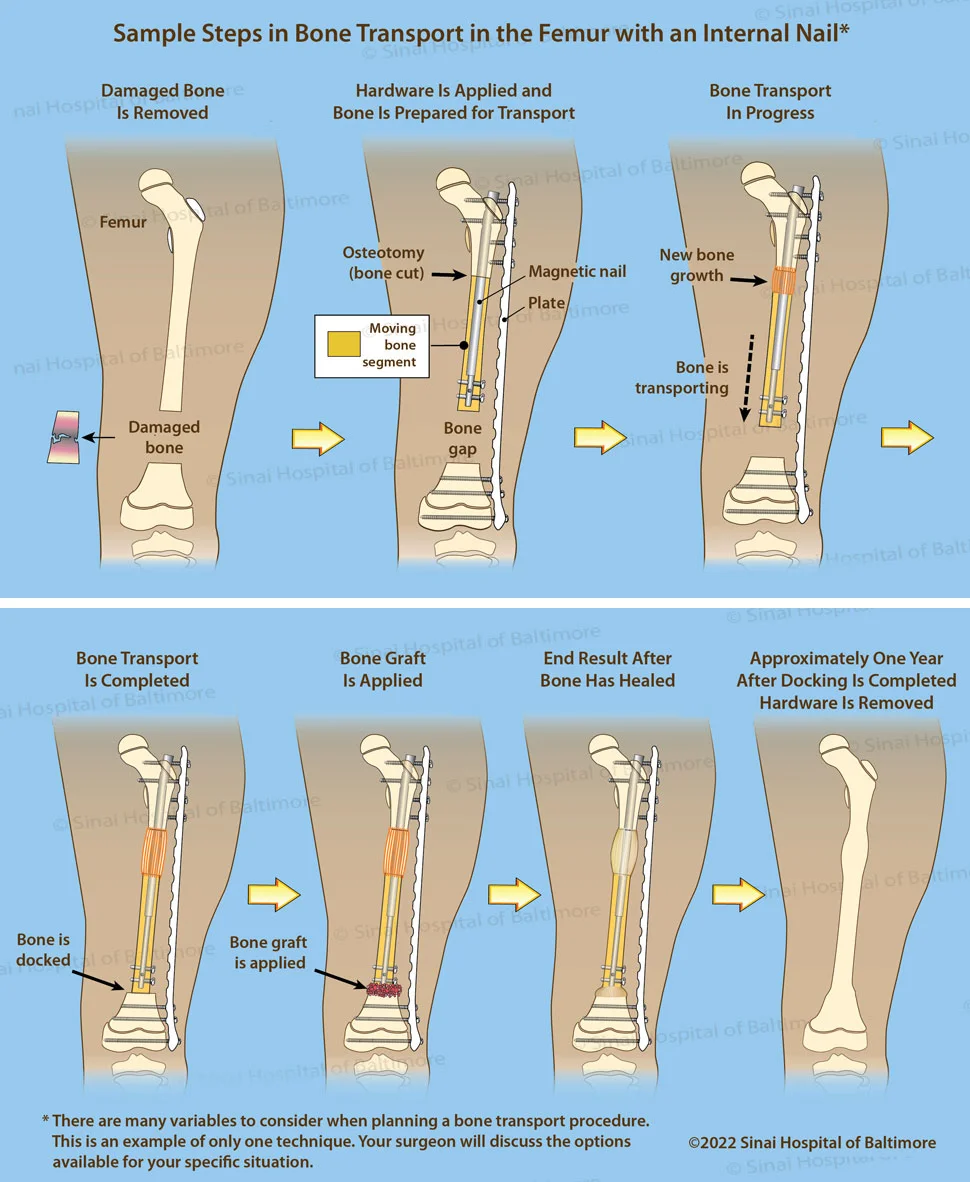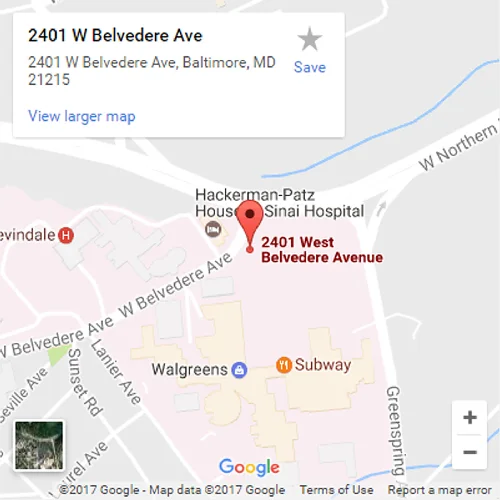Bone Transport
What is bone transport?
Bone transport is a procedure to grow new bone in a region where there is a missing section of bone due to infection, trauma or disease. There may be a gap in the bone due to serious injury. Diseased bone from infection or other processes may need to be surgically excised, leaving the bone with an empty void. This space needs to be filled in with new bone to regenerate the bone’s continuity and give the person equal limb lengths and normal function.
How is new bone formed?
When a bone is broken, immature bone is formed at the region of the break. This is a precursor to new bone formation; it is not as hard as bone and is “moldable” or “pliable.” If this immature bone is “stretched out” slowly over time before it is replaced with new bone, the bone can be made longer with new bone filling in the gap. This is how limb lengthening is undertaken. Eventually, the new immature bone will consolidate to be hard and strong enough to support body weight.
In cases of bone defect, the length of the overall tibia (shin bone), for example, may be satisfactory, but there is a gap in the bone that needs to be filled in with new bone. The intact bone can be cut or divided in a certain place, leaving a free segment of bone that can be moved. The segment created will be moved (or “transported”) from its original position in a slow, controlled fashion utilizing either an internal nail or a specialized ring external fixation system.

How is bone transported?
Bone can be transported using an external or internal fixator. The external fixator allows for management of soft tissue defects through changing the shape of the leg, correction of deformity and a maximum bone transport distance that is only limited by bony healing. The external fixator consists of pins and wires that connect to rings outside the leg. Special nuts or components will be turned each day on the external fixator to “transport” the bone. A prescription will be given that tells the patient how many turns need to be made each day. As the segment moves away from its original position, new bone is formed in between, gradually eliminating the gap. Over time, the segment meets the other part of the bone at the other end of the gap. When the two ends meet, they will grow together with new bone, just as a bone does after it is broken.
In both internal and external fixated bone transport, a “docking” procedure is typically required. In this procedure, the surgeon prepares the bone ends for final healing. Bone grafting may be required to optimize healing.
Many patients will be candidates for use of the internal rod alone, which patients tend to prefer. In this case, an internal Precice nail is placed inside the bone and is controlled with a magnet from outside the leg with an external remote controller (ERC). Using the ERC as directed by the surgeon generates the “transport.” On this page you will find illustrations to help demonstrate this process in both the tibia and the femur bone.

How long does bone transport treatment last?
After the surgery, one should expect a 3 to 4-day hospital stay. During this time in the hospital, patients with external fixators will be given instruction on how to care for the external fixator pin sites and keep them clean. Also, education will be given on how the external fixation device works and how to perform the bone transport by turning the various components of the external fixation. Patients with internal nails will learn how to use the magnetic ERC to very gradually perform the bone transport. The lengthening or distraction process usually starts 7 days after the operation.
The time it takes to fill in the gap depends on the length of the gap or void that needs to be filled. More commonly, bones can be lengthened at about 0.75 to 1.0 millimeter (0.03 to 0.04 inches) per day. A general rule of thumb is that it takes one month for bone to form for every centimeter (0.4 inches) of length gained. The time it takes for the bone to harden or mature in children after the distraction is usually twice as long as it takes for the lengthening itself. In adults, this may take 3 to 4 times longer. Additional time will be needed to heal the docking site, so it is not uncommon to have to wear the external fixator for 6 – 12 months. Patients with an internal nail will lengthen at the same rate. The internal nail is typically removed in 1-2 years.
What problems may occur with bone transport treatment?
Problems that may occur with this procedure are pain, infection of the pin sites (only an issue with external fixators), loss of motion in the joints, problems with healing new bone, nerve or blood vessel injury, blood clots, problems with the hardware, and need for other procedures to help with healing and correction. In the vast majority of cases, the problems may be addressed such that the end result, or outcome, is not compromised.
Why choose the International Center for Limb Lengthening for bone transport treatment?
The extensive experience of our team can help get you through this challenging treatment. Our patients benefit from our team-centered approach with world-renowned surgeons and specialized physician assistants, nurses and physical therapists. We help patients undergoing bone transport treatment achieve their best possible result.
